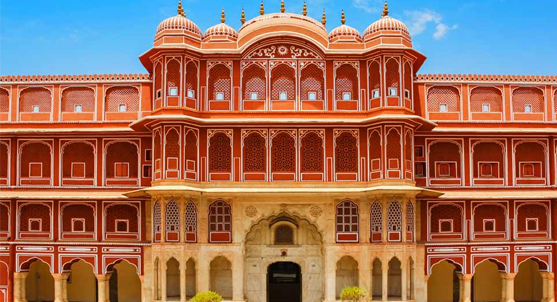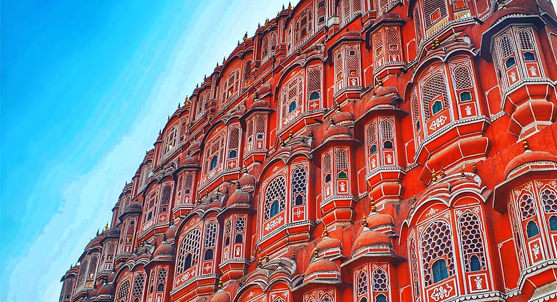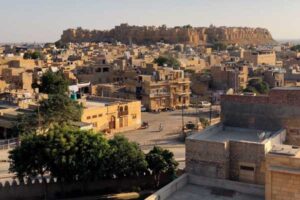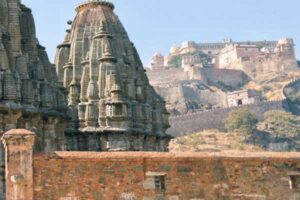Jantar Mantar
Jantar Mantar jaipur
Located in the heart of Jaipur, Jantar Mantar is an astrological observatory built by Maharaja Sawai Jai Singh II between 1728 and 1734. The observatory brought together scientific communities from all over the world and forged a link between cosmology and other spheres of human activity, including politics, society, and religion.
The other five temples in Northern India have its style, but this one is the largest and is on the UNESCO World Heritage list. The objective of these enormous stone instruments is to make it possible for the naked eye to examine the celestial bodies. Since the dawn of time, builders, mathematicians, artists, and historians have been fascinated by the accuracy and precision of these heavenly gadgets.
The observatory also has the largest stone sundial in the world, which has proven to be both an accurate timekeeper and a profitable tourist attraction. If you want to understand the process of measuring planetary movements by observation and computations, a visit to Jantar Mantar around noon is a must. When the sun is up, the instruments provide the most reliable readings.
COST EFFICIENT SERVICES
Provide highly efficient services at very competitive prices.
ATTRACTIVE PACKAGES
Exclusively customized packages for Rajasthan & India tours.
CAR RENTAL SERVICES
Hire a taxicab in Jaipur for local sightseeing and outstation needs.
100% SATISFACTION
Our company provides 100% customer satisfaction as it is our top priority.
24+ Year
Experience
20+ Tour
Destinations
15000 + Happy
Customers
Overview Of Jantar Mantar
Jantar Mantar, an astronomical observatory, may be visited in Jaipur. Sawai Jai Singh II ordered its construction. India has three additional Jantar Mantars besides Jaipur’s. Jaipur’s Jantar Mantar is a stunning assemblage of stone structures used to locate stars and planets. At least 19 stone and brass instruments have been popular. This gigantic monument is important to geographers, architects, and historians because it sets local time.This technical wonder remains innovative. The observatory remains vital as it did a millennium ago.
The main purpose of creating this tower was to study the cosmos, time, and space. The “present instruments” and the “instruments used in the Egyptian study of Ptolemaic astronomy” are synonymous. It is well knowledge that the observatory follows the standards set by the conventional celestial coordinates. They include a horizon- and zenith-based local system, an ecliptic-based system, and an equatorial-based system, respectively. These three methods may help researchers and geographers pinpoint the exact locations of celestial bodies.Now, in Jaipur, India, visit the Jantar Mantar to observe an unusual blend of architectural and astronomy apparatus
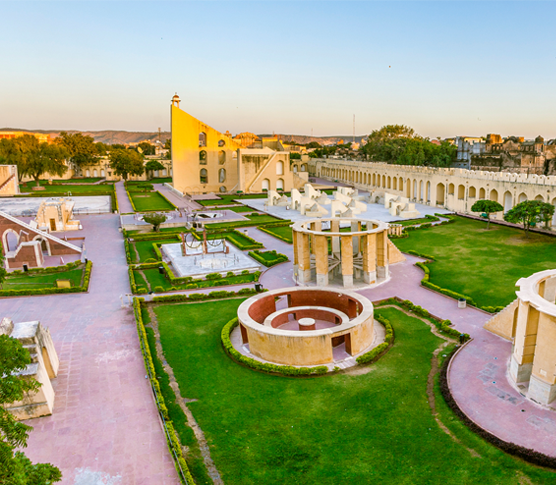
History of Jantar Mantar
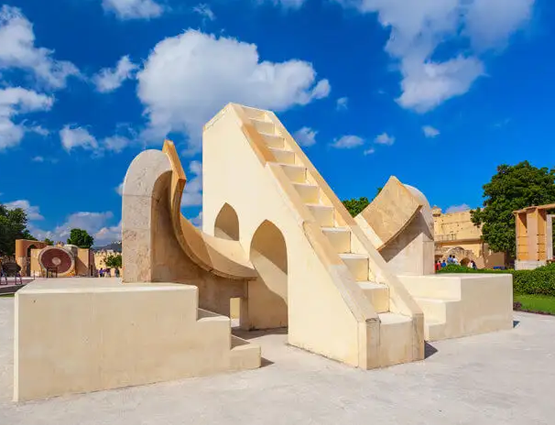
It is a cluster of extraordinarily enormous structures and cemented stones that were built in the early 18th century by Maharaja Sawai Jai Singh II. There’s a certain context in which each one shines. It was built because the Maharaja had a keen interest in tracking the positions of the stars and other heavenly bodies.
There are 19 enormous instruments in Jaipur’s Jantar Mantar, the most famous of which is the Samrat Yantra. There is a specific use for each of these tools. It has been agreed upon that this sundial is the largest in the United States.
It was in the year 1734 that work on this magnificent building was finally finished. The ability to see celestial objects with the naked eye is the main selling point of these gadgets. This method is based on Ptolemaic positional astronomy, which has been adopted by several cultures throughout the course of history
Architecture of Jantar Mantar
It is said that 23 of Jaipur’s most renowned astronomers were enlisted by the king to help him realise his vision. Although the observatory’s construction was plagued by many challenges, the finished product is a national architectural masterpiece.
The real monument is built using local materials like marble and stone. Each piece of equipment in this observatory was meticulously planned out and built to astronomical specifications. The overall floor space of this massive structure is 18,000 square metres. The tablets, bronze tablets, and mortar were the key building materials, therefore the structure is still standing and functional now.
Jantar Mantar in Jaipur has been maintained by the Rajasthan Government’s Archaeological Sites & Monuments Department since its inception in 1961.
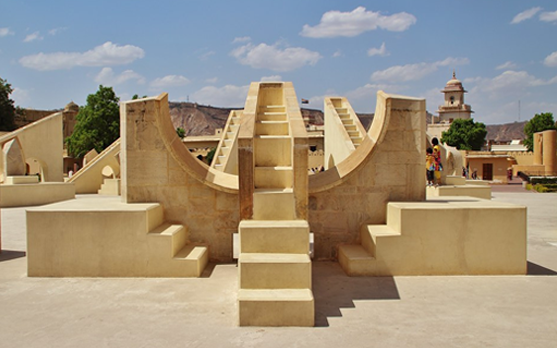
What To See

Inside Jaipur’s Jantar Mantar are 19 pieces of remarkable astronomical and architectural equipment. If you plan on visiting this amazing landmark, here is a breakdown of some of the things you really must do.
Places To Visit Near Jantar Mantar
After taking in the Hawa Mahal’s rich history and stunning architecture, it’s time to explore the neighbourhoods just beyond its walls. The Palace is one among the few nearby sites that can compete with the Hawa Mahal for awe and wonder.
Vrihat Samrat Yantra (The Huge Sundial)

Located in the heart of the observatory, this massive sundial is 27 metres in length. This equinoctial sundial can measure time to within two seconds of precision. The triangle-shaped wall of the yantra casts a shadow that travels at a constant rate no matter how long you leave it alone. The yantra has such a plan that its peaks point due north and south, and its base is inclined at an angle that is roughly proportional to the local latitude. It’s been fine-tuned to the point that you can tell the time only by watching the path of the triangle’s shadow.
Laghu Smarat Yantra
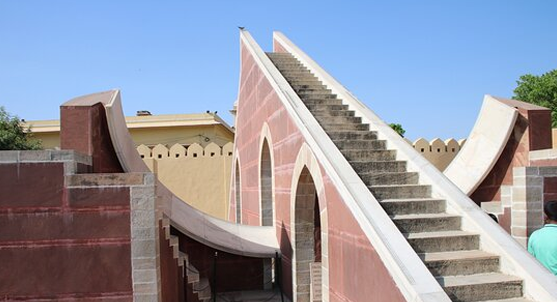
The term “tiny Smarat yantra” is in use to describe this instrument. It’s an uncomplicated gadget that, despite its little size, can pinpoint the time to within twenty seconds. Indeed, the sundial’s ramp is slanted in a manner that makes it point roughly towards the direction of the North Pole. Since the shadow cast by the ramp moves across the tiny divisions of the carved scale, it is much easier to calculate the time in Jaipur. This results in a considerably more precise computation.
Ram Yantra
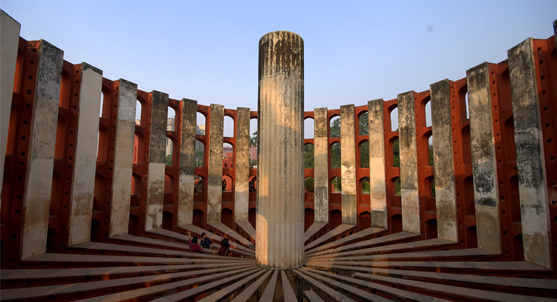
The azimuth and elevation of the sun and planets may be calculated using this yantra. The Ram instrument is full of many tube-like structures, all of which face upward. The tube buildings are all centred around a pole. All poles are the same height. The only other place to witness this yantra is Jantar Mantar in Jaipur and Delhi.
Chakra Yantra
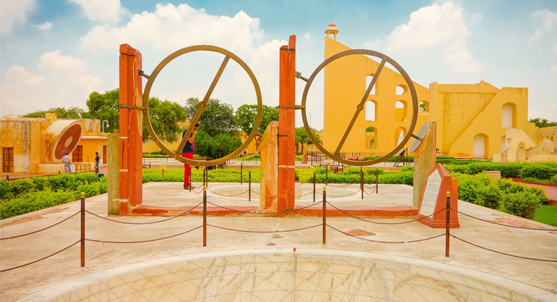
This ring-shaped device helps astronomers more precisely measure the hour angle and coordinates of the sun. Therefore, the four semicircular arches are the darkest places in the structure. This method causes the sun’s declination to decrease four times in a 24-hour period.
Sound And Light Show
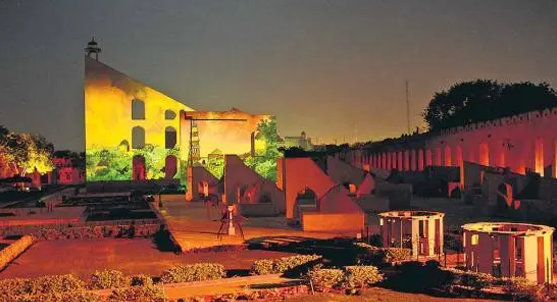
Jantar Mantar puts on a spectacular light and music show every night that you shouldn’t miss. It’s a great way to reminisce about the past, learn about Pink City’s background, and discuss why Jantar Mantar was built. The interesting story is well worth a reader’s time, and the pleasant color palette helps to hold that reader’s interest.
City Palace
The Sawai Jai Singh Museum is another option; it was built to house and display royal artefacts and to celebrate former Thai monarchs. The museum has a priceless collection of art, including paintings, textiles, costumes, antiquities, carpets, weapons, and even royal carriages. An aesthetically pleasing treat that justifies the effort required to enjoy it. Approximately 400 yards separate it from the Jantar Mantar.
Hawa Mahal
The ‘Palace of Wind,’ also known as Jantar Mantar, is an essential stop for tourists on a city tour. The beautiful Hawa Mahal, made of pink and red sandstone, can be found around 700 yards from Jantar Mantar. This summer retreat is an important part of Jaipur’s history due to its gorgeous architecture and the intricate detail of its wall and window carvings.
Tripolia Gate
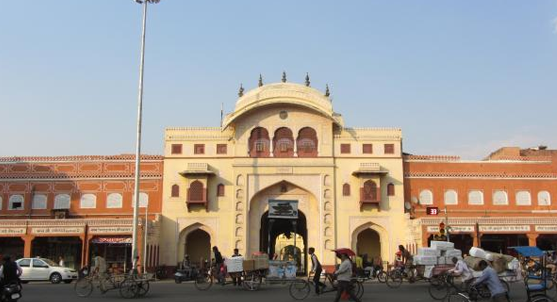
This massive structure, which welcomes visitors to Jaipur, was built back in 1734. The beautiful entrance is a seamless blend of Mughal and Rajput architectural styles, a fitting symbol for the reigning monarchy. It is a historical landmark in the Pink City, and the surrounding Tripolia market provides it with a constant buzz of activity.
Govardhan Temple
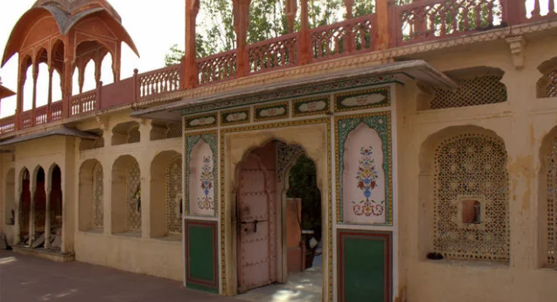
Within the Hawa Mahal complex is this temple, also known as the Iconic Temple and built by Maharaja Sawai Pratap Singh. Hundreds of devotees have been making the journey there since it was founded in 1790, seeking the favour of Krishna and Radha. The structure, which was made to seem like a Haveli, is very significant to both tourists and locals.
Things To Do
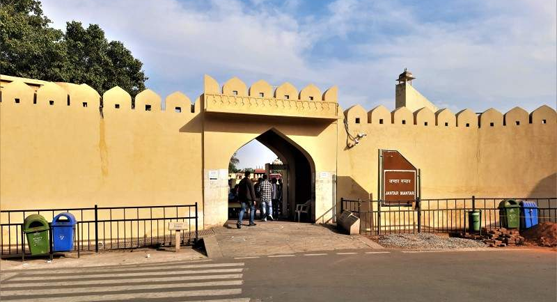
The Jantar Mantra has become famous worldwide, drawing in tens of thousands of visitors annually. If you’re visiting Jantar Mantar to learn more about the cosmos and the passage of time, you may also enjoy doing some of the other things you can find in the neighborhood.
Places To Eat Around Jantar Mantar
Taking in all of this magnificent structure’s sights will make you tired and hungry. While visiting the site, you may choose from a variety of restaurants serving both traditional fare like Dal Baati and Churma and more modern options like Pizza, Sandwiches, etc. Restaurants frequented by residents include the Midtown multicuisine restaurant, which is located around 500 meters from Jantar Mantar, and the Govindam retreat, which is known for its Rajasthani Thali. These are only a few examples of popular dining establishments in the area. Its location is around 500 yards from the Jantar Mantar.
You may also get a bite to eat at the Tattoo Café and Lounge, which is around 300 yards from Jantar Mantar, or stop by the Wind View Café, which is also about 300 meters away. Rawat sweets, located around 300 yards from the Jantar Mantar, is a great place to indulge your sweet tooth if you’re in the area.You may take a tour around the Jantar Mantar area to check out the many eateries and cafes there, where you can choose from a wide variety of cuisines to suit your tastes.Jantar Mantar, an astronomical observatory in Jaipur, India, has a long and illustrious history.

How To Reach
If you take a bus from Jaipur International Airport directly, your stop will be in the neighbourhood of Tonk Phatak. You’ll need to transfer buses in order to reach Badi Chopar from that station. As soon as you reach ground level, start wandering in the direction of Jaipur’s Jantar Mantar.
Best Time To Visit
Jantar Mantar and Jaipur are in Rajasthan, noted for its hot summers. Rajasthan’s capital is Jaipur. Thus, this astronomical observatory is best visited in spring or winter.
